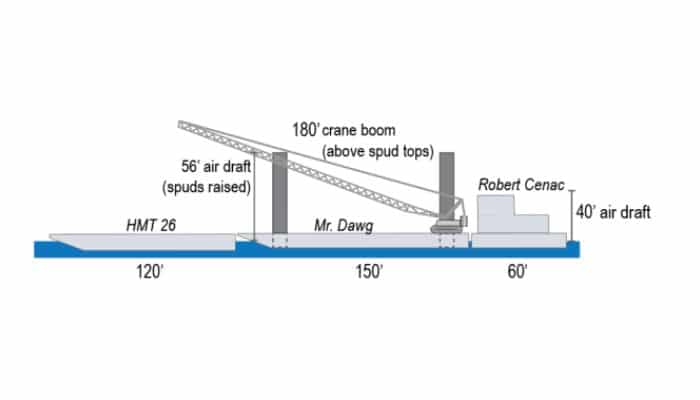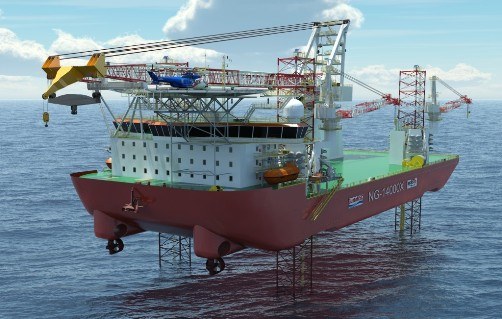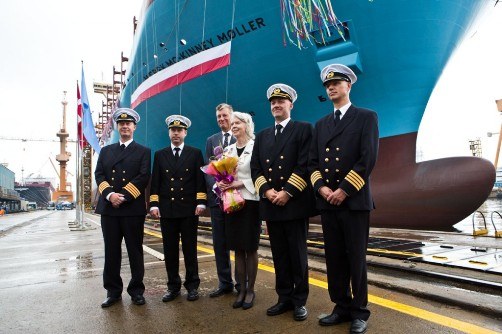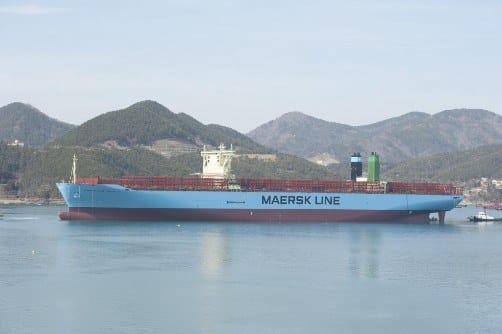Wrong Estimate Of Crane Height Leads To Bridge Contact – NTSB
An incorrect estimate of a crane’s boom height led to contact with the Houma Twin Span Bridge last year in Houma, Louisiana, the National Transportation Safety Board said Thursday.
On March 6, 2022, the towing vessel Robert Cenac was transiting the Gulf Intracoastal Waterway, pushing the crane barge Mr. Dawg and another deck barge. While attempting to pass beneath the Houma Twin Span Bridge, the crane aboard Mr. Dawg contacted the bridge span. Eastbound vehicle traffic, which is estimated at nearly 30,000 vehicle a day, was reduced from two lanes to one for 10 days. No injuries or pollution were reported. The contact resulted in $1.5 to $2 million in damages to the bridge.

The day before the contact, Sealevel Construction contracted with Al Cenac Towing to charter the Robert Cenac to tow the Mr. Dawg and a deck barge from Houma to Clovelly, Louisiana. Despite being asked at least twice about the height of the crane by the towboat operator before departure, Sealevel did not provide Al Cenac Towing with a verified crane height.
Without a verified crane boom height, the captain of the Robert Cenac estimated the total air draft of the tow, assuming the barge spuds to be a standard 50 feet high and then estimating the portion of the crane boom above the spuds at 10 feet, for a total air draft of “roughly 60 feet.” However, the raised spuds on the Mr. Dawg had an air draft of about 56 feet, not 50 feet as the captain assumed. The captain was also judging the height in the dark, which most likely affected his ability to accurately determine the boom’s distance above the spuds.
The NTSB determined the probable cause of the contact was the tow captain’s incorrect estimate of the crane boom height and his decision to depart before getting a confirmed height from the crane barge owner. Contributing to the incident was the crane barge owner not providing the accurate air draft information to the tow company.
“Tow operators are required to know the air draft of their vessel and tows and should not make assumptions,” the report said. “As the NTSB has recommended before, tow operators should have a detailed voyage plan with specific information concerning/about all known risks, including calculated overhead clearance limitations for tows. In this case, the captain should have waited to get underway until the exact air draft of the tow was established.”
The NTSB also previously recommended the Occupational Safety and Health Administration revise regulations to address “the placement and securing of crane booms for transit to and from marine construction and other sites.” OSHA declined to amend the regulations.
“When operating in higher risk conditions, operators should ensure that they have the most accurate and objective data before getting underway,” the report said. “Bridges pose a risk to vessels and tows with high air drafts. Owners and operators should develop voyage plans that assess operational risks and hazards, to include air draft relative to bridge vertical clearances along the intended route.”
Press Release
Disclaimer :
The information contained in this website is for general information purposes only. While we endeavour to keep the information up to date and correct, we make no representations or warranties of any kind, express or implied, about the completeness, accuracy, reliability, suitability or availability with respect to the website or the information, products, services, or related graphics contained on the website for any purpose. Any reliance you place on such information is therefore strictly at your own risk.
In no event will we be liable for any loss or damage including without limitation, indirect or consequential loss or damage, or any loss or damage whatsoever arising from loss of data or profits arising out of, or in connection with, the use of this website.
Disclaimer :
The information contained in this website is for general information purposes only. While we endeavour to keep the information up to date and correct, we make no representations or warranties of any kind, express or implied, about the completeness, accuracy, reliability, suitability or availability with respect to the website or the information, products, services, or related graphics contained on the website for any purpose. Any reliance you place on such information is therefore strictly at your own risk.
In no event will we be liable for any loss or damage including without limitation, indirect or consequential loss or damage, or any loss or damage whatsoever arising from loss of data or profits arising out of, or in connection with, the use of this website.
Do you have info to share with us ? Suggest a correction
About Author
Marine Insight News Network is a premier source for up-to-date, comprehensive, and insightful coverage of the maritime industry. Dedicated to offering the latest news, trends, and analyses in shipping, marine technology, regulations, and global maritime affairs, Marine Insight News Network prides itself on delivering accurate, engaging, and relevant information.

About Author
Marine Insight News Network is a premier source for up-to-date, comprehensive, and insightful coverage of the maritime industry. Dedicated to offering the latest news, trends, and analyses in shipping, marine technology, regulations, and global maritime affairs, Marine Insight News Network prides itself on delivering accurate, engaging, and relevant information.
Related Articles
Daily Maritime News, Straight To Your Inbox
Sign Up To Get Daily Newsletters
Join over 60k+ people who read our daily newsletters
By subscribing, you agree to our Privacy Policy and may receive occasional deal communications; you can unsubscribe anytime.




BE THE FIRST TO COMMENT